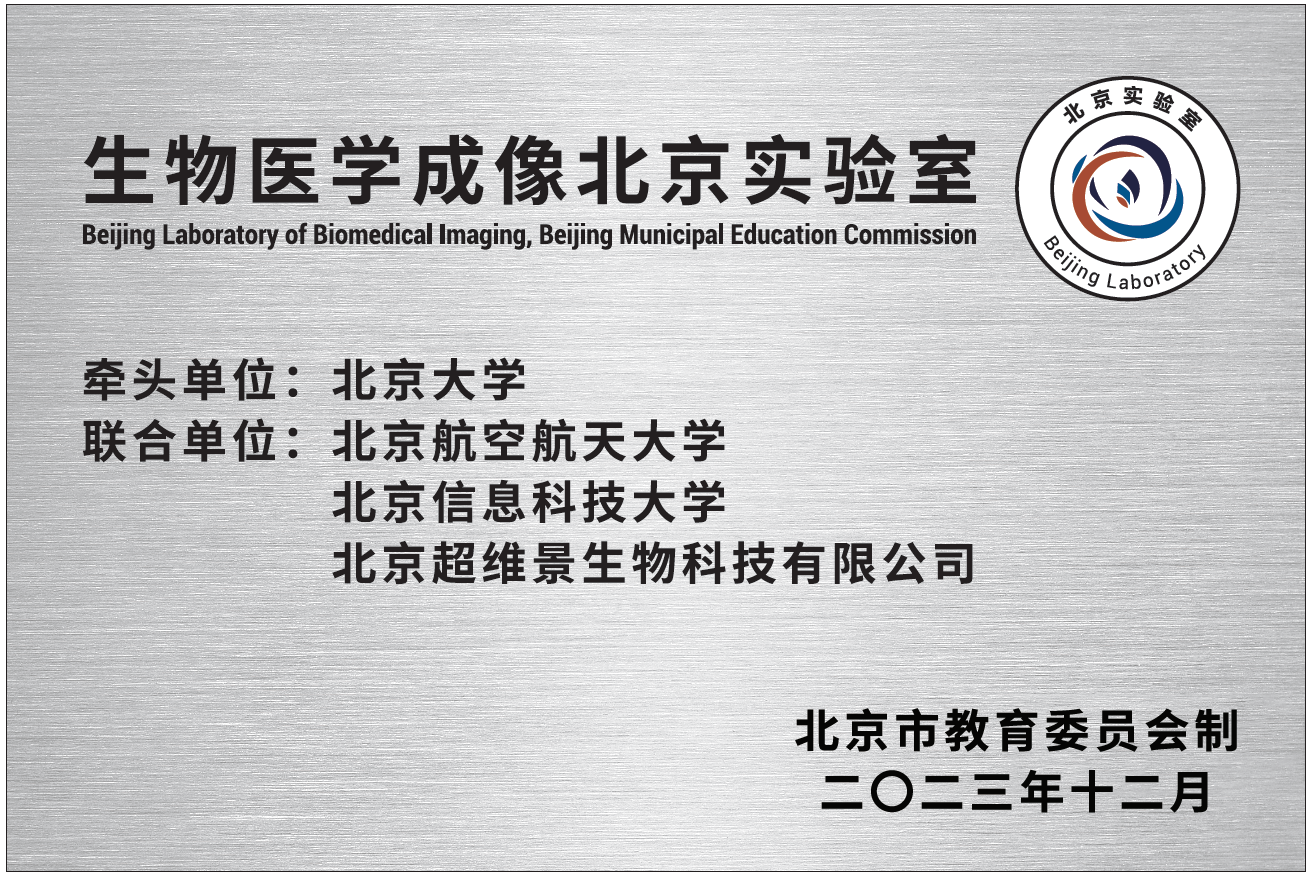Laboratory Overview
1. Laboratory Introduction
The Beijing Laboratory of Biomedical Imaging (hereinafter referred to as the "Laboratory") was formally established in December 2023, with approval from the Beijing Municipal Education Commission. It is initiated by Peking University in collaboration with Beihang University, Beijing Information Science and Technology University, and Beijing Transcend Vivoscope Biotech Co., Ltd. The laboratory aligns closely with national strategic needs, aiming at the global forefront of science and technology. It is committed to advancing biomedical imaging innovation across micro, meso, and macro scales and accelerating breakthroughs in the independent development of core devices. The laboratory aims to build a world-class research platform that integrates biomedical imaging technology R&D, foundational biological research, and clinical applications, promoting breakthroughs in life sciences and clinical medicine.

2. Development Goals
The Beijing Laboratory of Biomedical Imaging is committed to addressing the core needs of brain science research and the diagnosis, monitoring, and treatment of complex diseases. Through innovations in optical devices, physical principles, and mathematical reconstruction algorithms, the Laboratory aims to develop a series of world-leading, proprietary imaging technologies, including novel principles, methodologies, foundational devices, and imaging systems. One goal is to provide tools to solve key issues in brain science, enabling non-invasive brain-machine interface functions such as reading, recognizing, writing, simulating, as well as brain interventions and disease treatment. Driven by clinical needs, the Laboratory also focuses on developing new, intelligent, high-throughput imaging methods, along with medical instruments and consumables that support diagnostics, prognostics, and treatments for complex diseases at various levels. Our aspiration is for the Beijing Laboratory of Biomedical Imaging to become an international hub for biomedical imaging technology development, foundational biological applications, and clinical applications, overcoming technical bottlenecks in high-end biomedical imaging, bridging the gap between basic research and clinical medicine, producing pioneering biomedical technology companies, and acting as an engine for Beijing's advancement in high-end medical instruments and related core technologies.
3. Organizational Structure
The Laboratory operates on a model of "innovation, collaboration, mobility, openness, and sharing," guided by the principles of "independent innovation, priority breakthroughs, leadership development, and integration of science and education." The laboratory comprises a Construction Committee, Academic Committee, Directors’ Committee and Laboratory Office, adopting a director-led system under the guidance of the Academic Committee. Technical platforms are organized into micro, meso, and macro imaging, as well as clinical applications, each responsible for different aspects of imaging technology R&D and application. Professor Heping Cheng serves as Laboratory Director, with Professors Liangyi Chen and Aimin Wang as Deputy Directors.




